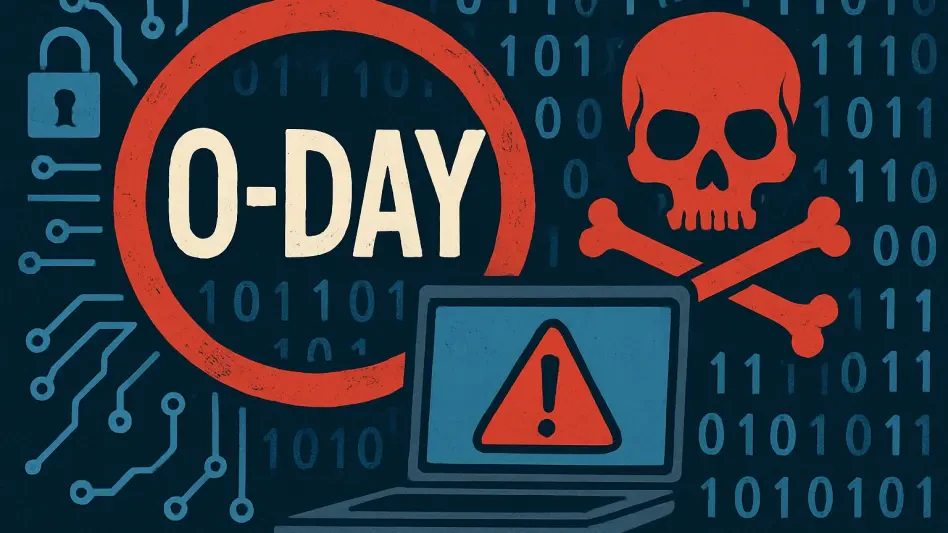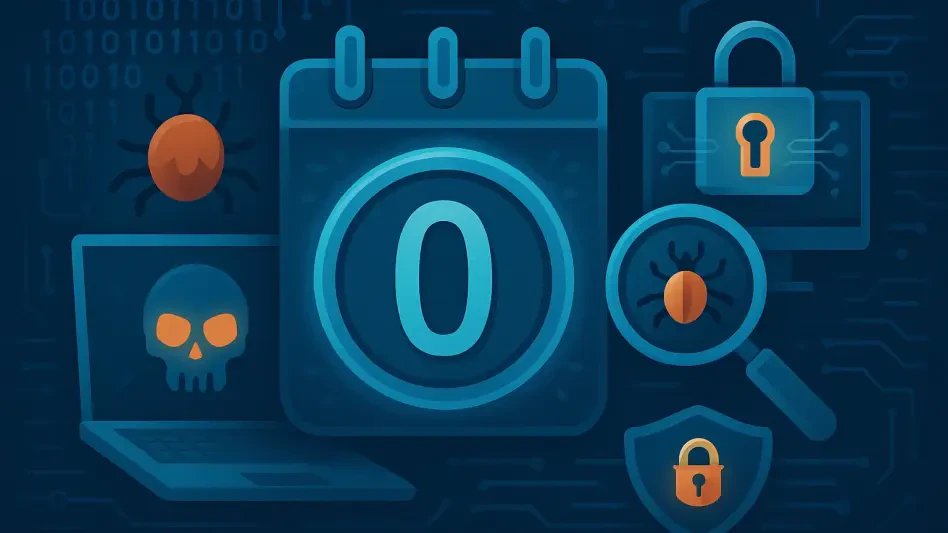Microsoft has started the year 2025 with a significant security push, releasing a comprehensive set of updates as part of its first Patch Tuesday. This release includes 159 updates across various products, addressing eight zero-day vulnerabilities. The updates span Windows, Microsoft Office, and Visual Studio, reflecting a broad effort to enhance security and functionality across Microsoft’s ecosystem. The substantial volume of patches along with critical fixes underlines the company’s commitment to protecting users and maintaining the integrity of its software offerings.
Zero-Day Vulnerabilities: A Major Focus
The highlight of this Patch Tuesday is the resolution of eight zero-day vulnerabilities. These zero-day vulnerabilities are particularly critical as they are often exploited by attackers before developers have a chance to address them. By tackling these vulnerabilities early in the year, Microsoft demonstrates its commitment to security and proactive measures in safeguarding systems. Zero-day vulnerabilities present immediate threats and necessitate prompt resolution to prevent potential exploitation and data breaches.
These vulnerabilities affect various critical components, including the Windows operating system and Microsoft Office applications. The prompt addressing of these issues is crucial for maintaining the integrity and security of systems worldwide. Users, IT administrators, and enterprise environments must prioritize these updates to mitigate potential risks. Timely application of these patches can protect against threats that could compromise sensitive information, disrupt services, or enable unauthorized access.
Extensive Number of Patches
This Patch Tuesday is notable not only for the zero-day fixes but also for the sheer volume of updates released. With 159 patches, Microsoft has undertaken a comprehensive effort to enhance both security and functionality across its product range. This extensive update includes a mix of critical and important patches that address a wide array of vulnerabilities. The significant number of updates reflects a proactive approach to maintaining and improving the security posture of Microsoft’s products.
The updates cover various products, including Windows, Microsoft Office, and Visual Studio. This broad coverage ensures that multiple aspects of Microsoft’s ecosystem are fortified against potential threats. The inclusion of a variety of patches, from operating systems to development tools, indicates a thorough and far-reaching effort to address multiple vulnerabilities. Users and administrators should take note of these updates to ensure the proper functioning and security of their systems.
Servicing Stack Update: Key Changes
An important aspect of this release is the servicing stack update, which brings substantial changes to desktop and server platforms. The servicing stack update affects the installation, updating, and uninstallation processes of MSI Installer, MSIX, and AppX packages. This necessitates additional testing to ensure smooth transitions and functionality, making it a critical component of this Patch Tuesday cycle. The goal is to optimize and secure the update and deployment mechanisms across Windows platforms.
The servicing stack update aims to maintain the efficiency and reliability of the update process, ensuring that systems remain secure and up-to-date with minimal disruption. As these changes are substantial, organizations should be prepared for the potential impact on their existing deployment processes. Ensuring that updates apply correctly, without causing issues, requires rigorous testing and validation across different system configurations and environments. This will help prevent any disruptions and ensure a seamless update experience.
Focus on Security Enhancements
Security is a central theme in this Patch Tuesday release. Various components, such as RD Gateway, DNS management, and network protocols, have received significant attention. These updates are designed to address vulnerabilities that could have severe implications if left unpatched. The detailed focus on security is evident in the number of critical vulnerabilities highlighted in this update cycle. By addressing these issues, Microsoft aims to prevent potential exploitation and enhance the overall security of its products.
For instance, two vulnerabilities, CVE-2025-21275 and CVE-2025-21308, have been highlighted as critical. These vulnerabilities affect core application functionality and require immediate attention to prevent potential exploitation. The emphasis on security is a clear indicator of Microsoft’s ongoing commitment to protecting its users and ensuring resilient systems. This release underscores the importance of staying vigilant and promptly applying patches to maintain robust security.
Known Issues and Enterprise Impact
Several known issues have been identified in this update cycle, particularly affecting enterprise setups. Issues with the OpenSSH service post-update and problems with Citrix’s Session Recording Agent are notable examples. These issues underscore the need for vigilance and thorough testing in enterprise environments. Administrators must be aware of these known issues and take appropriate actions to mitigate potential disruptions and maintain system stability.
The updates and issues significantly impact enterprise and professional setups, reflecting Microsoft’s attention to ensuring secure and functional business environments. The focus on security and functionality in enterprise contexts highlights the importance of ongoing maintenance and vigilance. Administrators should review the known issues, apply the necessary mitigations, and ensure comprehensive testing to address any potential impacts on their environments. This will help maintain the stability and security of their systems amidst updates.
Detailed Analysis of Major Revisions
Several previously released updates have seen major revisions in this Patch Tuesday. For example, the Windows Installer Elevation of Privilege Vulnerability (CVE-2025-21311) has an updated group policy release. This revision aims to better handle VBS script security issues associated with the rollout of Virtualization-based Security (VBS). The major revisions are critical to address lingering vulnerabilities and improve the overall functionality of systems.
Specific vulnerabilities, such as Windows Themes Spoofing (CVE-2025-21308) and memory-related vulnerabilities in the legacy line printer daemon (LPD), have been detailed. Addressing these vulnerabilities is crucial for closing potential security gaps and ensuring the integrity of systems. These updates reflect an ongoing effort to refine and strengthen security measures within the Microsoft ecosystem. Users and administrators should be attentive to these revisions and apply them accordingly to avoid exposure to known vulnerabilities.
Lifecycle and Retirement Updates
Microsoft has also provided updates on the lifecycle and expected retirements of several products. Notable retirements include Microsoft Genomics on January 6, 2025, Visual Studio App Center on March 31, 2025, and SAP HANA Large Instances on June 30, 2025. Additionally, support for Windows 10 will end in October 2025, marking a significant milestone for enterprises relying on this operating system. Understanding these lifecycle updates is essential for planning and transitioning to supported technologies.
These lifecycle updates require substantial planning from enterprises relying on these products. Organizations must prepare for these changes to ensure a smooth transition and continued support for their systems. Administrators should start strategizing for these retirements and identify alternative solutions or upgrades to mitigate impact. Planning ahead will facilitate a seamless transition, avoiding disruptions in workflows and maintaining operational continuity.
Functional Areas for Testing
Given the breadth of updates, it is essential to focus on different functional areas for testing. Key areas include Remote Desktop and Networking, Local Windows File System and Storage, Virtualization and Hyper-V, and Security and Authentication. Ensuring stability and functionality post-update is critical for maintaining system performance and security. Comprehensive testing across these areas will help identify and address potential issues early.
Testing priorities also include app deployment scenarios, WebSocket connections, and graphical user interface consistency, especially in foreign language applications using IMEs. This thorough testing approach helps highlight and resolve potential issues, ensuring a smooth update process. Properly addressing these functional areas through rigorous testing prevents disruptions and reinforces the stability of Microsoft environments following the application of patches.
Microsoft Office and Developer Tools Updates
Microsoft kicked off 2025 with a major security enhancement, rolling out a comprehensive set of updates as part of its initial Patch Tuesday. In total, Microsoft released 159 updates covering multiple products, addressing eight zero-day vulnerabilities. These updates span several Microsoft products including Windows, Microsoft Office, and Visual Studio, underscoring a widespread initiative to bolster both security and functionality across its technology ecosystem.
This substantial release of patches is indicative of Microsoft’s ongoing commitment to safeguarding its users and preserving the reliability of its software. The volume of updates demonstrates a concerted effort to proactively tackle security flaws and improve the user experience. By addressing zero-day vulnerabilities promptly, Microsoft aims to minimize the risk of exploitation and enhance the overall robustness of its platforms.
The updates are crucial not only for fixing existing issues but also for preventing potential threats. This proactive stance in its first Patch Tuesday of the year sends a clear message about the company’s priorities in technology safety and usability. Users are encouraged to apply these patches to ensure they benefit from the latest protections and improvements. The initiative is part of a broader strategy to maintain a secure and efficient operational environment for all Microsoft product users, reinforcing the company’s reputation for dependability and user-centric development.







